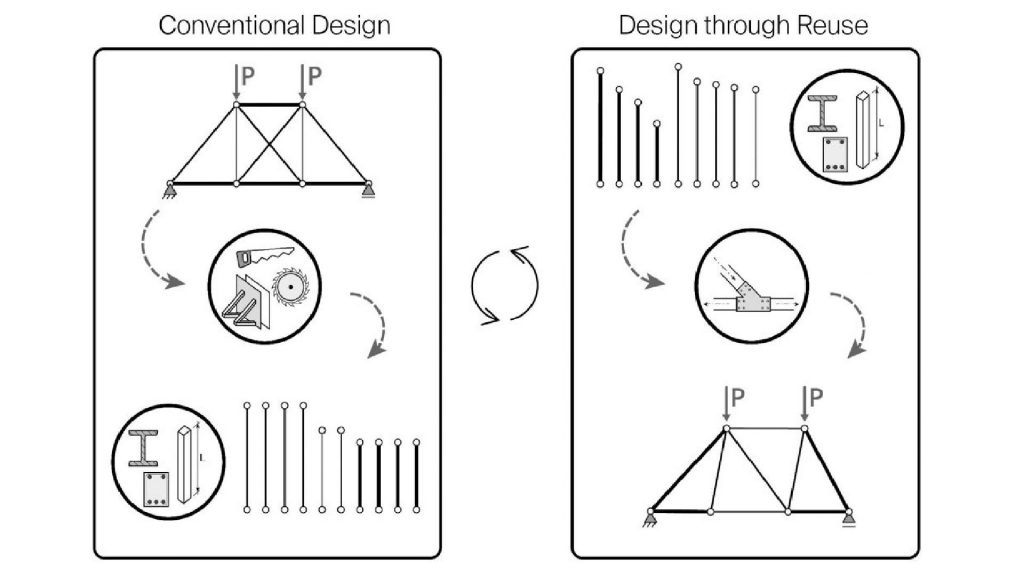
Phoenix3D is open source because everyone should benefit from it. At SXL, we believe in sharing knowledge as it also allows for external input for further improvement and development.
What is the project about?
Phoenix3D is a plugin for the Computer Assisted Design (CAD) environment Rhino+Grasshopper, which is used by architects and structural engineers to design structures parametrically. In particular, P3D supports designers (architects and engineers) to design and explore truss structures that are made from reused structural components. To install the plugin, one can simply use the built-in “package manager” inside Rhino in basically one click. Besides that, the software and further documentation are also on GitHub. The plugin is freely available and written in C#.

Credit: Structural Xploration Lab
Why Open?
The software is open source because everyone should benefit from it. At SXL, we believe in sharing knowledge. This also allows us to get impulse from outside to further improve and develop the software.
Who benefits from it?
Phoenix3D is aimed for architects and structural engineers who are designing structures that are made from reused elements. In general, reusing structural elements can significantly reduce the environmental impact of a structure (carbon footprint). Therefore, it’s a rising topic in the construction sector. And to allow architects and engineers to deal properly with these reused elements, P3D is there to support and guide decision-making.

Credit: Structural Xploration Lab
How did you make it Open Software?
There are three ways to get the software, all of them are open source. First, one can use the package manager inside Rhino. In addition, P3D is available at food4rhino which is a platform for 3rd-party plugins for Rhino+Grasshopper. And – as already described – there is a GitHub page for P3D. By now, the software has more than 600 downloads and is used for teaching purposes as well as in real-life projects with collaborating architectural practices.
Credit: Jonas Warmuth, Structural Xploration Lab
Contact: Jonas Warmuth